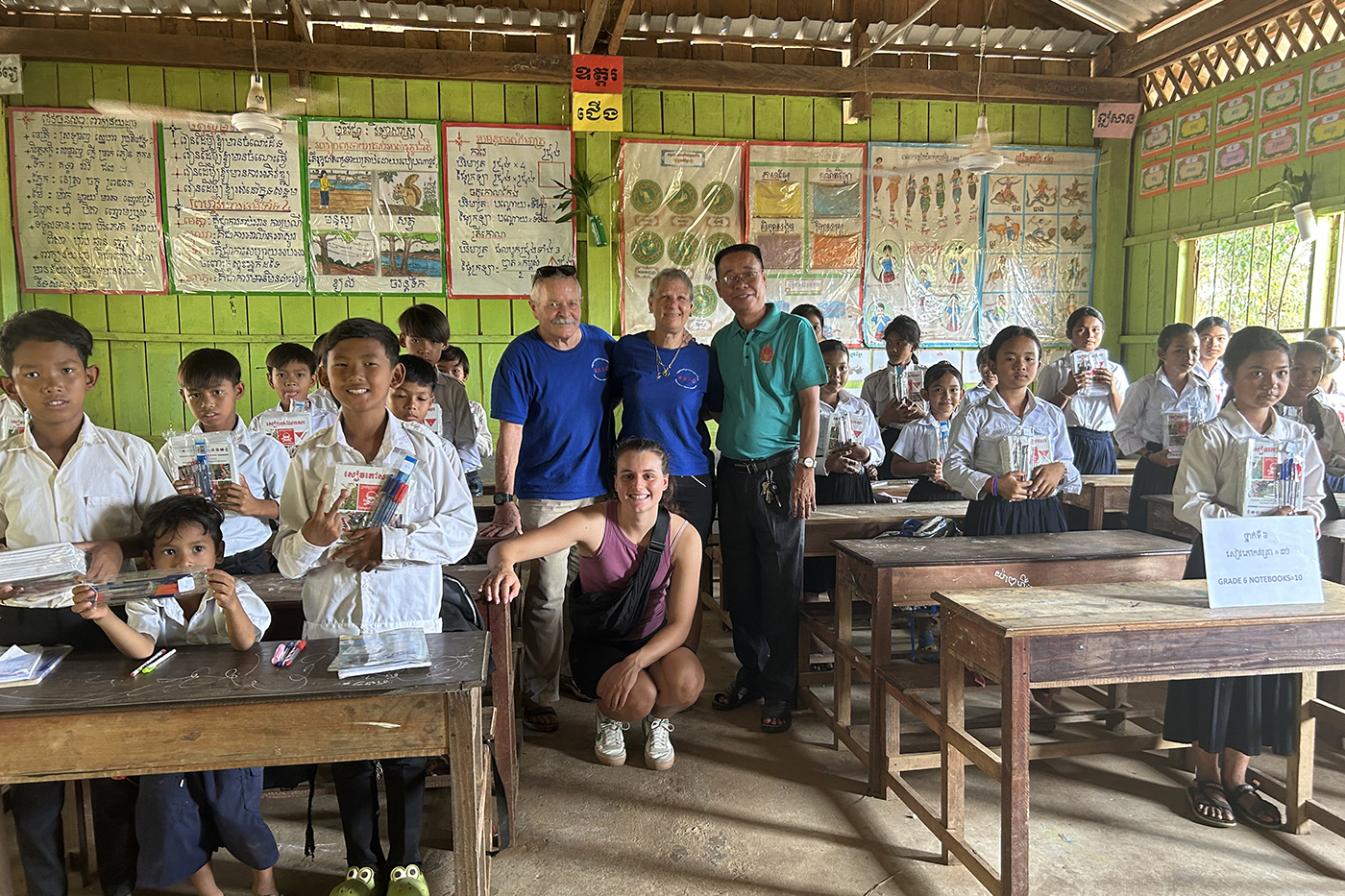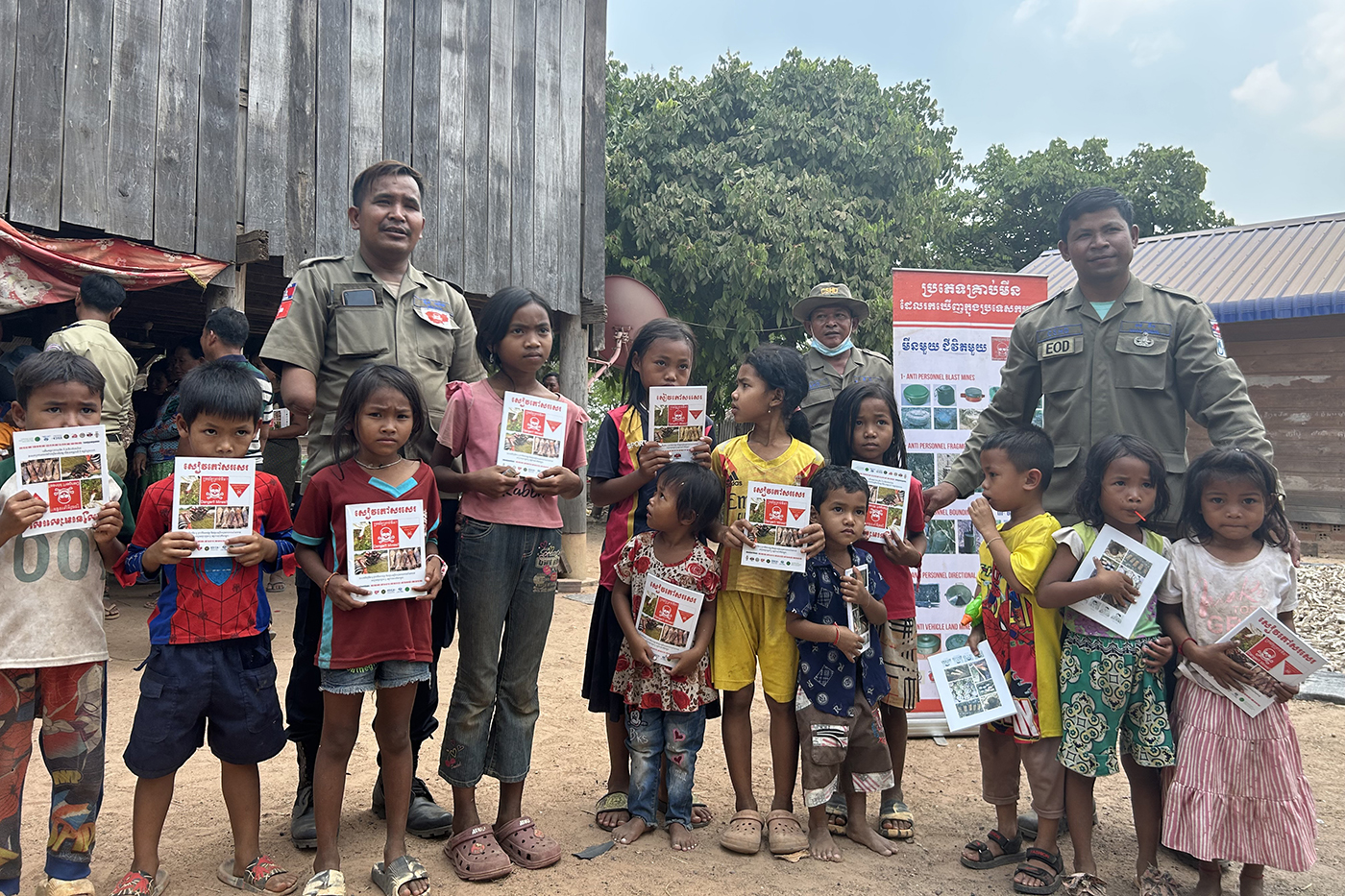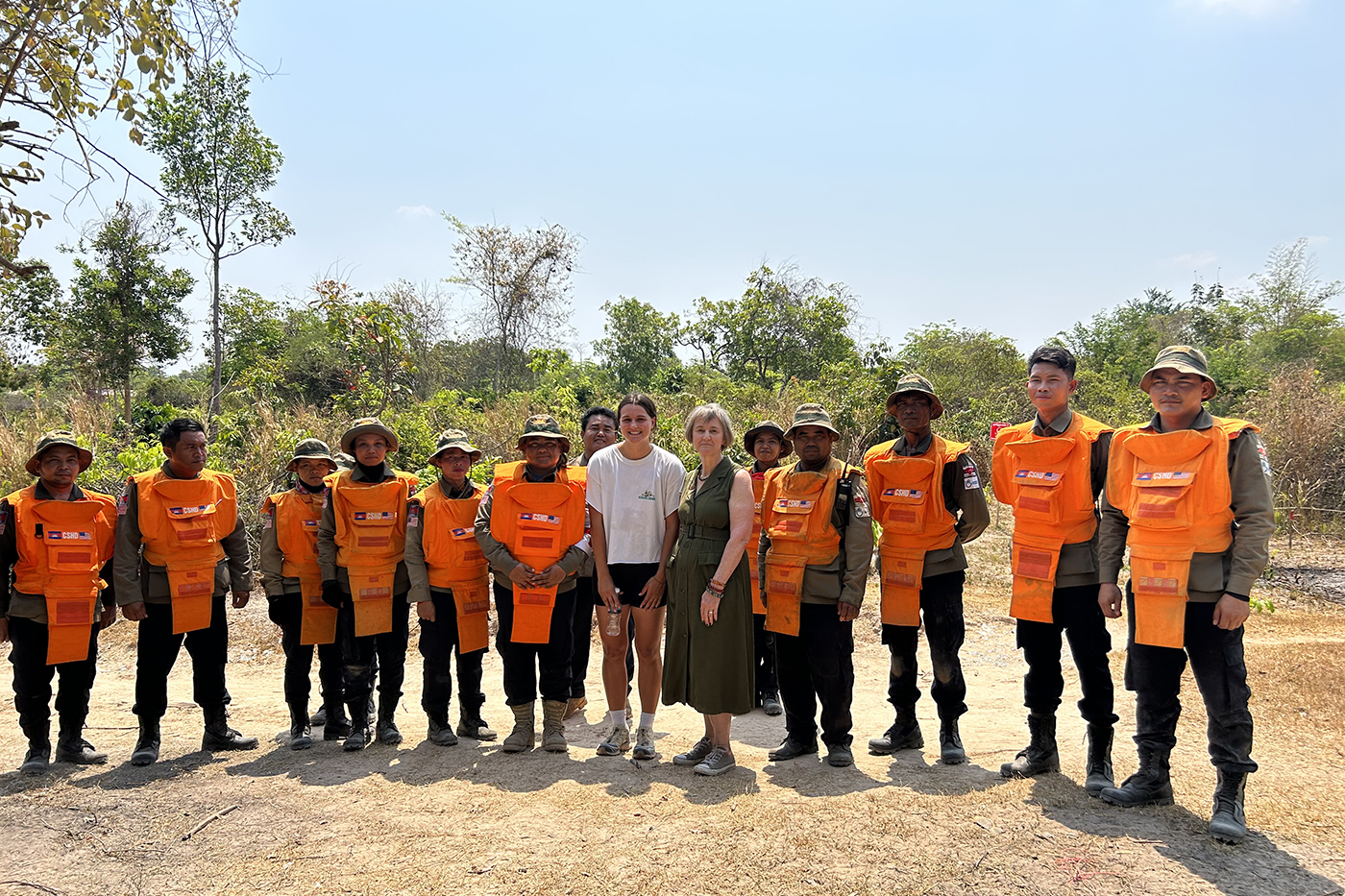‘I wanted to go out into the field.’ How co-op in Cambodia taught Northeastern student to be comfortable in uncomfortable situations

It took Paris Graff, a second-year student at Northeastern University, almost three days to get to the destination of her international co-op in January.
The flight from her home city of San Francisco to Singapore alone took 17 hours, but Graff didn’t fret. She knew she had found a perfect co-op opportunity for herself at the Landmine Relief Fund in Siem Reap, Cambodia.
“A lot of what I was finding was office work, and I really wanted to get the chance to go out into the field,” she says. “As soon as I read the description about this co-op for the Landmine Relief Fund, I was like, ‘Oh, I want to do that.’”
The Landmine Relief Fund is an American nongovernmental organization established by William and Jill Morse to support the work of a former Khmer Rouge child-soldier Aki Ra, founder of the Cambodian Self-Help Demining organization. The Morses met him in 2003 and moved from California to live full-time in Siem Reap, the second largest city in the country, in 2009.
After nearly 35 years of civil war and conflict between the 1970s and 1990s, land mines and other unexploded ordnance littered Cambodia, especially rural areas in the northwest. They killed more than 20,000 people and injured more than 45,000 others since the fighting stopped. As of 2020, an estimated 4 million to 6 million of them remain unexploded.


The Landmine Relief Fund gathers donations for Cambodian Self-Help Demining together with a number of other projects and programs.
The Cambodian Landmine Museum, established by Aki Ra, not only welcomes visitors but also houses orphans and conducts an English language program for local children. The Rural School Village Program builds schools on demined land, hires teachers and provides pupils with supplies. It finished building its 29th school recently.
The Together Project runs an organic farm and teaches Cambodian rural farmers to grow sustainable and nutritious crops. It donated 400 tons of rice to Siem Reap’s population during the COVID-19 pandemic, when the city’s tourism revenues dwindled and many residents became food insecure.
Since Landmine Relief Fund has only two full-time employees, Graff has been taking care of various aspects of the NGO’s operation. She has been running social media accounts and websites for the fund and the programs, prepared press releases and news letter updates, made YouTube videos with her iphone during field trips and assisted with various schools-related tasks like delivering supplies or payments to teachers.
Graff has visited the current minefield that the deminers are working on three times so far and shadowed the Explosive Ordnance Disposal team on a three-day trip, joined by Canadian Ambassador Sarah Taylor. Oftentimes, the demining crews go to clear explosives in remote rural areas, Graff says, where people have meager incomes from farming rice, corn or cassava and live in very minimalistic conditions.
Although Graff’s had an opportunity to blow up some unexploded ordnance with TNT by pushing a button from a safe distance, she realizes how dangerous the job of the deminers is, some of whom are landmine victims themselves.
“It’s, obviously, sort of a heavy situation,” she says. “But they’re all joking with each other and making the most of it, which is cool.”



Graff has been acquiring a lot of new skills at this co-op. She says Morse is a very good mentor, who often steps back and lets her figure out things on her own.
“He does not tell me how to do it at all,” she says.
She has also learned to be more flexible and comfortable in uncomfortable situations. Oftentimes, she is in the field with people who don’t speak any English. It is also hot and dusty everywhere because of the dry season, with temperatures above 100 degrees. Sometimes there are no bathrooms or the food is not cooked the way she is used to.
“You just have to push past it,” Graff says, “and that’s something that I think I’ve gotten pretty good at, actually.”
Outside of work, Graff has made friends among young Cambodians, and together they have been going to watch Siem Reap’s pro-soccer team play, to get food or ride around the city on mopeds.
Graff says Siem Reap is a beautiful city on a river, lined with lush green trees which remind her of the Indiana Jones ride at Disneyland. It can be chaotic and loud though, with people driving mopeds (often the wrong way) up and down the street, honking and yelling.
“There’s stray dogs everywhere. So every night, I am woken up by barking and howling or crowing of a rooster,” she says.
Siem Reap is also located near the ancient temple complex Angkor Wat, the largest religious structure in the world and a UNESCO world heritage site.
“That has been amazing. I mean, the temples are just insane, “ she says. “It’s just huge.”
Between April 14 and 16 Siem Reap was heavily decorated with colorful lights, flags and dangling stars for the Khmer New Year—a traditional celebration of a solar new year. More than 100,000 Cambodian tourists descended on the city, and the traffic got so bad, Graff says, that she had to walk everywhere.
One of the big New Year traditions is a citywide three-day water battle. This means that no one who leaves their house is safe from being doused with water from water guns or any other vessels.
“It’s like a dream, like when you’re a kid,” Graff says, showing off her large purple-and-yellow water gun during a video call.
Graff is majoring in international affairs and minoring in Mandarin, which she has been studying since elementary school. She visited China when she was 16 as well as Vietnam on a different occasion, and she is interested in Asia overall.
“This is what, I think, prepared me for my experience in Cambodia,” she says.
While in Cambodia, Graff decided to add another minor in public health.
“In my opinion, climate change and public health are some of the biggest issues that the international community is facing,” she says. “I just thought that it would be beneficial to have a better understanding of one of those topics.”
In the future, she sees herself working for the State Department or a nongovernmental organization like the Landmine Relief Fund.
“I’m really enjoying working for an NGO,” Graff says. “I’ve always had my heart set on doing the Peace Corps, right after I graduate college. “
She wants to live in different places and travel all over the world.
“I have a lot of different ideas. I mean, being a diplomat would be amazing.”
Alena Kuzub is a Northeastern Global News reporter. Email her at a.kuzub@northeastern.edu. Follow her on Twitter @AlenaKuzub.






